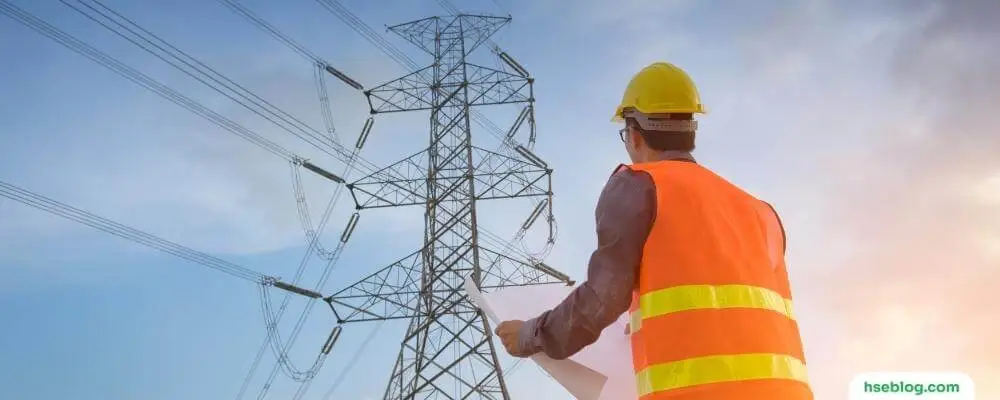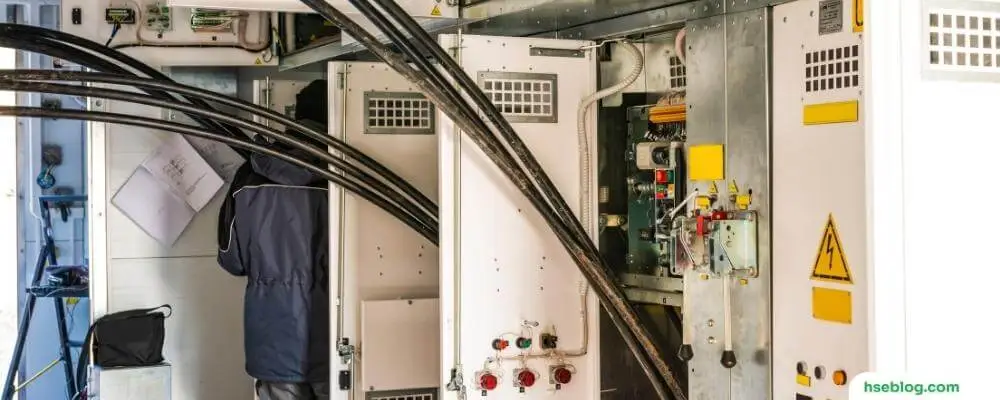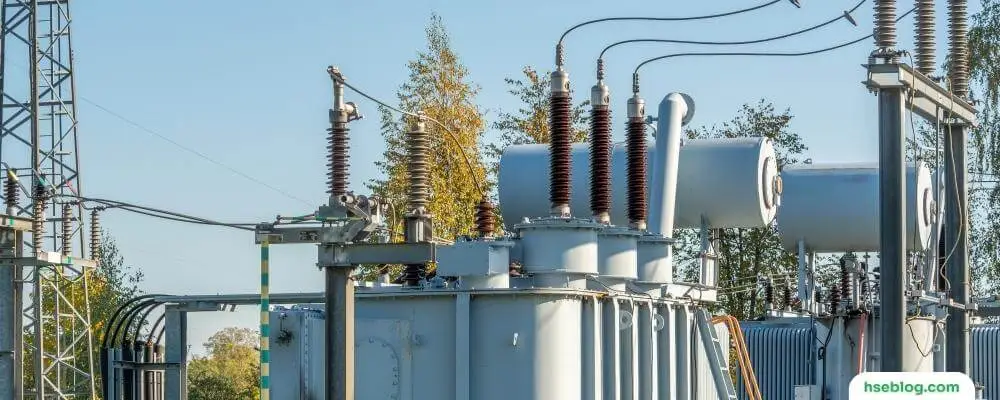High voltage systems are integral to many aspects of modern life, from powering our industries to supporting innovative technologies. However, the valuable potency of these systems also introduces considerable risks. This blog post highlights high voltage hazards and introduces the necessary, safe practices to mitigate these risks. We will shed light on the immediate threats, like electric shock and burns, and the more concealed hazards, such as electromagnetic fields.
Moreover, we’ll provide a clear understanding of essential, safe practices when dealing with high-voltage environments. By enhancing our knowledge about these hazards, we can cultivate a safer and more secure working culture around high-voltage systems. Let’s delve deeper into the charged world of high-voltage safety.
Definition of High Voltage
In the realm of electricity, “high voltage” is a relative term, its value largely depends on the context. The International Electrotechnical Commission (IEC) defines high voltage as any voltage over 1000 volts for alternating current (AC) and over 1500 volts for direct current (DC). However, in common usage, high voltage often refers to levels significantly higher than this, particularly in the context of power transmission.
Importance of High Voltage in Various Applications
High voltage is essential in various fields and applications. Here are some examples:
- Power Transmission: High voltage is crucial for transmitting power over long distances. When voltage is increased, the current for a given power level is reduced. This is important because power loss due to resistance in the transmission lines is proportional to the square of the current. Therefore, transmitting power at high voltage and low current significantly improves power transmission efficiency, reducing energy losses.
- Industrial Processes: High voltage is used in numerous industrial processes. For example, high voltage is used in applications such as electroplating, powder coating, and electron beam welding in manufacturing and materials processing. High voltage is also necessary for driving large industrial machinery and motors.
- Medical Technology: In the medical field, high voltage is used in various diagnostic and therapeutic technologies. X-ray machines, for instance, require high voltage to generate the X-rays used in medical imaging.
- Research and Development: High voltages are essential in various areas of scientific research, including particle physics, where particle accelerators use high voltage to accelerate particles to high speeds.
- Electronics: In electronics, high voltage is used in devices such as cathode ray tubes (found in older televisions and computer monitors), photomultiplier tubes, and semiconductor devices.
- Electric Vehicles: Electric vehicles use high-voltage battery systems to efficiently store and deliver power to the vehicle’s motor.
High voltage plays a vital role in numerous aspects of modern life. However, strict safety measures are necessary when working with or near high-voltage systems due to their associated hazards.

Dangers Of High Voltage | Common Hazards You Need To Know
High-voltage electricity carries inherent risks. These hazards are not just confined to severe injuries or death from electric shock; they can also cause burns, falls, fires, and explosions. Below are some of the most common dangers associated with high voltage:
1. Electric Shock
When a person comes into contact with a high-voltage electrical source, electric current can flow through the body, interfering with normal electrical signals within the body, such as those controlling the heart. This can lead to cardiac arrest, arrhythmias, and other cardiovascular complications. Besides, it can cause respiratory paralysis, muscle contractions, nerve damage, and unconsciousness. The severity of the shock can depend on the voltage level, the current’s path through the body, the duration of exposure, and the current’s nature (AC or DC).
2. Burns
Electrical burns are a common and serious injury in high-voltage electrical accidents. These types of burns can be incredibly damaging because they can burn tissues beneath the skin, sometimes without causing much damage to the skin itself. This could result in severe damage to muscles, nerves, and blood vessels, requiring extensive medical treatment. There are three main types of electrical burns: electrical burns (from the current passing through the body), arc burns (from a flash), and thermal contact burns (from contact with overheated surfaces).
3. Electrical Arc Flash / Arc Blast
Arc flash and arc blasts occur when electrical insulation or isolation between conductors is broken or can’t withstand the applied voltage. The air becomes the conductor, forming an arc of electricity. An arc flash can reach temperatures up to 35,000°F, hotter than the sun’s surface. This extreme heat can cause severe burns in a fraction of a second. An arc blast, the pressure wave caused by the rapid heating of air and vaporization of metal, can throw workers across rooms, resulting in physical injuries or death. It can also cause damage to hearing due to the loud sound of the blast and eyesight from the intense light produced.
4. Fires and Explosions
When electrical equipment overheats or wires are left bare, there is a risk of sparking, which can ignite nearby flammable materials and cause a fire. In some cases, the heat from an electrical system can cause certain materials to explode, posing another layer of danger. This is especially critical in environments with volatile gas, oil, and certain chemicals.
5. Electromagnetic Fields
High-voltage equipment generates electromagnetic fields (EMFs). There’s ongoing research on the long-term health effects of prolonged exposure to EMFs. Still, some people seem sensitive to these fields, experiencing symptoms like headaches, fatigue, and sleep disturbances. Some studies suggest a correlation between long-term exposure to strong EMFs and an increased risk of leukemia and brain cancer. However, more research is needed to establish a definitive link.

Indirect Hazards of High Voltage
1. Indirect Injuries
An often-overlooked hazard of electrical accidents is the potential for indirect injuries. For example, if an electric shock causes a worker to fall from a ladder, scaffolding, or other heights, they could sustain serious injuries, including broken bones, spinal injuries, or traumatic brain injuries. Similarly, a person could be thrown by the force of an arc blast, leading to similar physical trauma.
Preventing these risks involves rigorous adherence to safety protocols, including personal protective equipment, regular equipment inspections and maintenance, and comprehensive safety training. Awareness and education are crucial in recognizing these dangers and taking appropriate measures to protect oneself.
2. Falling from Heights
When an individual working at an elevated position is exposed to a high voltage, the resultant shock can lead to involuntary muscle contractions or even unconsciousness. This loss of control and balance can cause the person to fall, leading to potentially serious injuries or even death. This is why safety measures such as guardrails, fall arrest systems, and safety nets become crucial in high-voltage environments.
3. Equipment Damage
High voltage, especially when it exceeds the designed limits of equipment, can cause significant damage. This may include blown fuses, melted wires, and destroyed electronic components. Such malfunctions can cause immediate danger – for example, a sudden machinery failure could lead to accidents.
Additionally, damaged equipment can become an ongoing hazard, with the risk of electrical shock or fire if the damage is not properly identified and repaired. The high cost of repairs or replacement is another serious consequence of equipment damage caused by high voltage. This underlines the importance of regular maintenance checks and safety measures to prevent overvoltage conditions.

High Voltage Risk Assessment & Safe Working Practices
Risk assessment is a critical step in managing high-voltage electrical safety. It involves identifying potential hazards, evaluating the risks associated with those hazards, and determining appropriate ways to eliminate or control the hazards. Here is a general approach to high-voltage risk assessment:
- Hazard Identification: First, identify all potential hazards associated with high voltage in the work environment. This could include risks from electric shock, arc flash/blast, fires and explosions, electromagnetic fields, and indirect injuries such as falls. The assessment should consider all work activities, equipment, and individual worker factors.
- Determine the Risks: For each identified hazard, determine the level of risk. This should consider both the likelihood of the hazard causing harm and the severity of potential harm. Factors to consider might include the condition and type of equipment being used, the working environment, and the experience and training of the personnel involved.
- Implement Control Measures: Based on the level of risk determined, implement appropriate control measures to eliminate or minimize the hazard. This could include Elimination, Substitution:
Engineering Controls, Administrative Controls, and Personal Protective Equipment (PPE): - Monitor and Review: Regularly monitor the effectiveness of the control measures and review the risk assessment. This should involve ongoing inspection and maintenance of equipment and regular review of safety procedures and training. The risk assessment should also be reviewed and updated if any changes in the workplace could impact hazards or risks.
It’s important to note that risk assessment should be a collaborative process involving input from various stakeholders, including management, workers, and health and safety representatives. Furthermore, the findings and recommendations from the risk assessment should be clearly communicated to all employees who may be affected.

Safe Working Practices Around High Voltage
Working with high voltage involves inherent risks. Therefore, following safe work practices prevents electrical incidents and injuries. Here are some key safety measures to consider:
- De-Energizing Equipment: Before beginning any work on electrical equipment, it’s crucial to de-energize the equipment first. This means shutting off the power and disconnecting the equipment from the electrical source.
- Lockout/Tagout Procedures: Lockout/tagout procedures are critical for ensuring that machinery and equipment are properly shut off and cannot be started again before maintenance or service work is completed. This involves using locks and tags to indicate that the equipment is not to be operated until the locks and tags are removed by the person who put them on.
- Personal Protective Equipment (PPE): Despite all preventive measures, there’s still a risk of an electrical incident. This is where PPE comes in. Insulated gloves, flame-resistant clothing, safety glasses, face shields, and other protective clothing can protect workers from electric shocks, arc flashes, and other electrical hazards.
- Regular Maintenance and Safety Checks: Regular maintenance ensures electrical equipment functions properly and safely. This includes checking for loose or frayed wires, signs of overheating, and other potential hazards. Safety checks are also crucial for ensuring that safety measures, such as lockout/tagout procedures, are followed correctly.
- Training and Awareness: Workers exposed to electrical hazards should receive training on safe work practices, emergency procedures, and using PPE. Training should be provided regularly and whenever new equipment, procedures, or hazards are introduced to the workplace.
- Clear Marking and Signage: High-voltage areas and equipment should be marked with appropriate signs to alert workers of potential hazards. This can help prevent accidental contact with energized equipment.
- Emergency Preparedness: It’s crucial to be prepared for an emergency. This includes knowing how to respond to an electrical incident, having the appropriate first aid and fire-fighting equipment available, and knowing how to evacuate the workplace safely.
- Good Housekeeping: A clean and orderly workspace can help prevent accidents by removing potential fire sources and making it easier to move around without accidentally contacting electrical equipment.
- Maintaining Safe Distance: Workers should maintain a safe distance from high-voltage equipment unless properly trained and equipped.
Remember, these practices should be customized to fit your workplace’s specific needs and conditions and reviewed and updated regularly to ensure their effectiveness.
Conclusion
Understanding the dangers of high voltage and adopting safe practices are essential to promoting safety in all high-voltage environments. We can effectively manage and mitigate these risks by familiarizing ourselves with hazards like electric shock, burns, arc flashes, and less visible dangers such as electromagnetic fields. Implementing safe practices, regular maintenance, and training is not merely a good-to-have but an absolute necessity. High voltage power is immense, and with it comes the responsibility of ensuring safety. Knowledge, vigilance, and adherence to safety protocols are our most valuable tools in harnessing this power safely.

